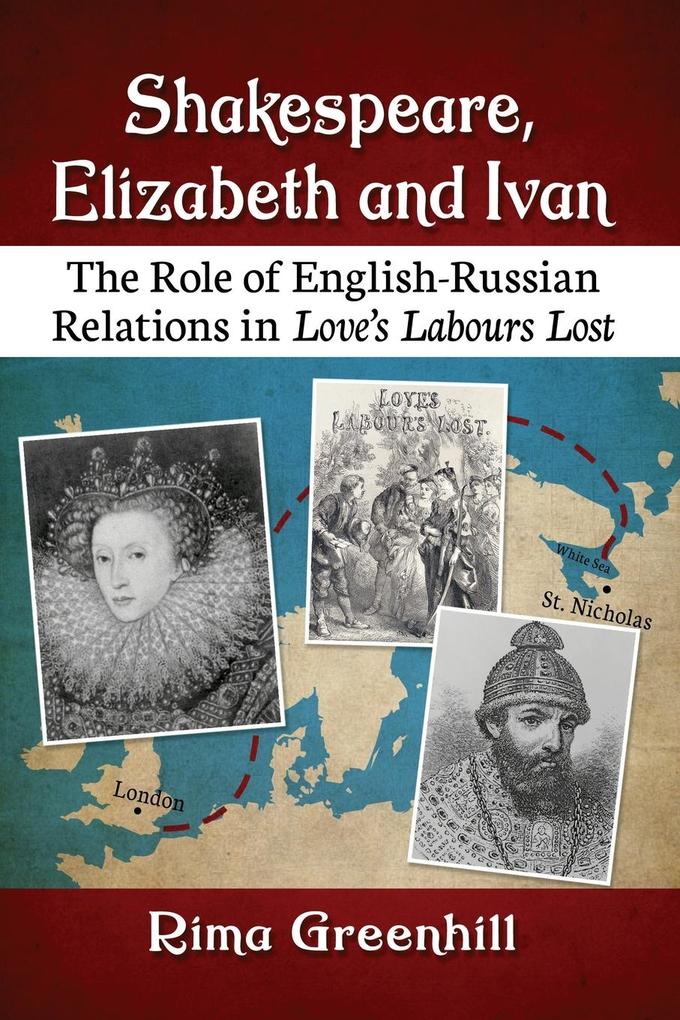Bücher versandkostenfrei*100 Tage RückgaberechtAbholung in der Wunschfiliale
Unser Herbst-Deal: 15% Rabatt12 auf Spielwaren, English Books & mehr mit dem Code HERBST15
Jetzt einlösen
mehr erfahren
Zustellung: Do, 16.10. - Mo, 20.10.
Versand in 5 Tagen
VersandkostenfreiBestellen & in Filiale abholen:
Shakespeare's comedy Love's Labour's Lost has perplexed scholars and theatergoers for over 400 years due to its linguistic complexity, obscure topical allusions and decidedly non-comedic ending. According to traditional interpretations, it is Shakespeare's "French" play, based on events and characters from the French Wars of Religion.
This work argues that the play's French surface conceals a Russian core. It outlines an interpretation of Love's Labour's Lost rooted in diplomatic and trade relations between Russia and Elizabethan England during the dramatic decades following England's discovery of a northern trade route to Muscovy in 1553. Drawing on original research of 16th-century sources in English, Latin and French, the text also surveys Russian sources previously unavailable in translation. This analysis provides new explanations for some of the play's previously most enigmatic elements, such as its unconventional ending, the significance of its secondary characters, linguistic anomalies and the Masque of the Muscovites itself.
This work argues that the play's French surface conceals a Russian core. It outlines an interpretation of Love's Labour's Lost rooted in diplomatic and trade relations between Russia and Elizabethan England during the dramatic decades following England's discovery of a northern trade route to Muscovy in 1553. Drawing on original research of 16th-century sources in English, Latin and French, the text also surveys Russian sources previously unavailable in translation. This analysis provides new explanations for some of the play's previously most enigmatic elements, such as its unconventional ending, the significance of its secondary characters, linguistic anomalies and the Masque of the Muscovites itself.
Inhaltsverzeichnis
Table of Contents
Timeline: Historical Events in England, Russia and Europe, 1530-1649
Preface
Introduction
Part I-Love's Labors: Mary, Elizabeth and Ivan, 1553-1584
¿1.¿Seasick Coming from Muscovy
¿2.¿What Buys Your Company?
¿3.¿The Ambassadors of Love
¿4.¿The Armipotent Mars
¿5.¿The Empress of Muscovy
¿6.¿The Soldier, the Clown and the Wench
Part II-Labors Lost: Elizabeth and Godunov, 1584-1598
¿7.¿The Curate, the Pedant and the Boy
¿8.¿A Feast of Languages
¿9.¿Heirs of All Eternity
10.¿The Pageant of the Nine Worthies
Epilogue: You This Way, We That Way
Chapter Notes
Bibliography
Index
Timeline: Historical Events in England, Russia and Europe, 1530-1649
Preface
Introduction
Part I-Love's Labors: Mary, Elizabeth and Ivan, 1553-1584
¿1.¿Seasick Coming from Muscovy
¿2.¿What Buys Your Company?
¿3.¿The Ambassadors of Love
¿4.¿The Armipotent Mars
¿5.¿The Empress of Muscovy
¿6.¿The Soldier, the Clown and the Wench
Part II-Labors Lost: Elizabeth and Godunov, 1584-1598
¿7.¿The Curate, the Pedant and the Boy
¿8.¿A Feast of Languages
¿9.¿Heirs of All Eternity
10.¿The Pageant of the Nine Worthies
Epilogue: You This Way, We That Way
Chapter Notes
Bibliography
Index
Produktdetails
Erscheinungsdatum
22. März 2023
Sprache
englisch
Seitenanzahl
266
Autor/Autorin
Rima Greenhill
Verlag/Hersteller
Produktart
kartoniert
Gewicht
437 g
Größe (L/B/H)
229/152/16 mm
ISBN
9781476684826
Entdecken Sie mehr
Bewertungen
0 Bewertungen
Es wurden noch keine Bewertungen abgegeben. Schreiben Sie die erste Bewertung zu "Shakespeare, Elizabeth and Ivan" und helfen Sie damit anderen bei der Kaufentscheidung.










